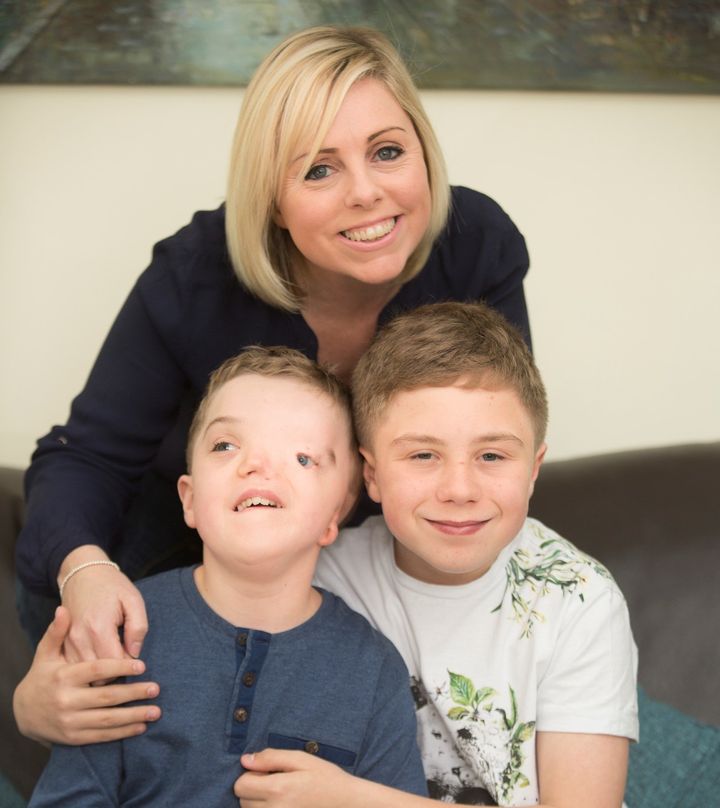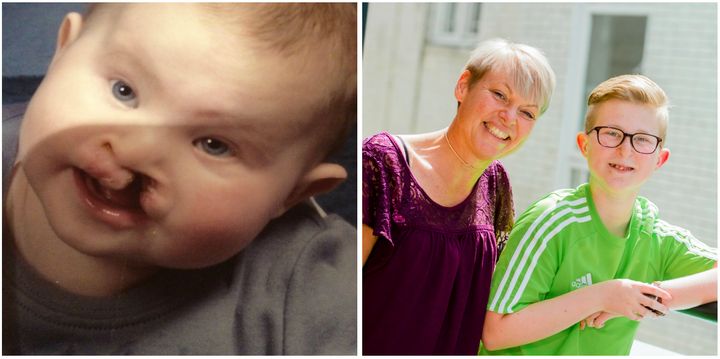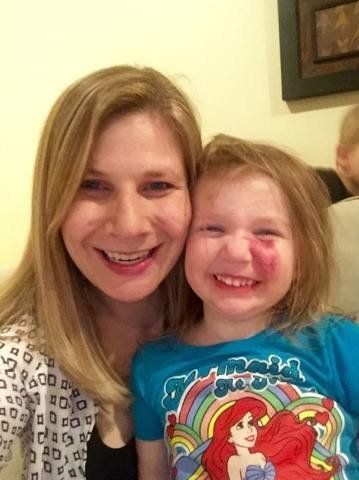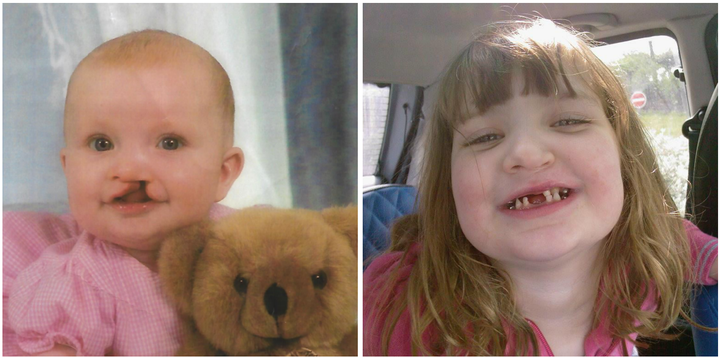The extent of bullying towards children with facial differences has been revealed by a national charity.
Changing Faces surveyed 800 people with a facial disfigurement and found that almost half of them are bullied at school and the vast majority - nearly 90% of those surveyed - said their primary school did not succeed in stopping the bullying.
In response to these statistics, parents of children with facial differences spoke to HuffPost UK about how other mums and dads can help tackle this issue simply by having a conversation with their kids.
“Reaching children when they’re young, so that they learn to value difference is so important,” said Changing Faces CEO Becky Hewitt.
“Young people are under such pressure to look a certain way, so looking and feeling different in a society where beauty is valued very highly can be extremely difficult.”

Hewitt added: “We want to move towards a society that values difference so that everyone can live confident and happy lives.”
The survey results coincide with the launch of the film ‘Wonder’, starring Julia Roberts and Owen Wilson, which is based on R.J. Palacio’s best-selling children’s book about the school experiences of a boy with a facial disfigurement.
Hewitt hopes the film will raise awareness about how young children with facial differences feel.
“If the film ‘Wonder’ makes one more child aware of how their thoughtless remark might affect another child, or makes someone stop and think before staring at someone that looks different in the street then that will be hugely positive,” she added.
While some parents embrace the term “disfigurements, others feel it has negative connotations so they prefer o use the term “differences”.
Here, four parents who have children with facial differences share what they would like you to teach your kids.
1. Be kind. Always.
Claire Thompson’s son Sam, now 13, was born with a cleft lip and palate.
“Teach your children to take the time to get to know a person and not make a judgement on how they look,” the 44-year-old mum, from Sheffield, said.
“A child with a facial disfigurement has feelings just like you do, don’t stare or laugh as they get sad too.”

2. Difference isn’t anything to be afraid of.
Thompson said children should grow up learning and understanding that everyone is unique - and no one is perfect.
“Social media has created an idea of perfect and there is no perfect, everyone is different and different is good,” she said.
Jane Appleyard’s daughter Ellie-Mae, 13, was born with a bilateral cleft lip
and palate. Ellie-Mae, from Rotherham, was bullied at school because of her disfigurement.
“It’s important for parents to teach their children that ‘difference’ isn’t anything to be afraid of,” said Appleyard, 33.
“It’s what makes us all unique and helps us stand out from the crowd. Life would be boring if we were all the same.”
Appleyard said it could be a good idea to talk to your children about who is actually different, explaining: “Is it the person who stands out from the crowd because they don’t look the same or is it the rest of society that are ‘different’?
“Talking to your children about this and pointing out that no one is identical and that we are all unique is very helpful.”

3. It’s not acceptable to stand and stare.
“People of any age should understand this,” said Appleton. “So please talk to your children about the impact that staring could have on that young person and how they would feel if someone stared at them a lot.
“With Ellie-Mae, the pointing and staring really broke our hearts and it was very upsetting. Some people may be happy to be asked about why they look ‘different’ but equally some may not like the confrontation.”

4. Ask questions, sensitively.
Charlie Beswick, 39, from Stoke on Trent, who blogs at Our Altered Life, is mum to 12-year-old Harry who was born with Goldenhar syndrome. He has no eye socket or nostril and he has a short jaw.
“I actively encourage questions because I accept that my son does look different but as soon as people meet him they realise he’s just as special as them,” she said.
Kelly Wilson Bossley, 39, from Denver, US, is mum to three-year-old Lydia, who was born with a facial birthmark.
She agreed that questions were welcomed, adding: “My family would much rather answer questions about my daughter’s facial birthmark than to overhear people talking about it only to be met with silence.
“I know this is done in an effort to be polite but the silencing makes it feel like having or noticing a difference is shameful.”
5. Engage in normal conversations.
Elizabeth Nobel, a psychotherapist, and head of client services at Changing Faces, where she hears parents’ concerns, said parents should let their children know: “If you feel worried about what to say to someone who looks different, try starting off with some things about you.
“Tell the person what you like to do, or about one of your pets, or your favourite TV show.
“The other person will probably join in, or you can ask them about the things they like and enjoy.
“Talking about what makes you both happy is usually a good way to start with someone new.”
Bossley added: “Instead of shushing your children, try engaging them. My daughter would love the chance to teach other kids about her birthmark and let them know she is okay.”
6. Smile.
Beswick said she always encourages people to come and say hello to her son, adding: “If you don’t want to do that then a smile makes a big difference.”
Nobel said parents should tell their child: “If you see someone who looks unusual to you, you might look for a long time, or more than once before you even think about it. If this happens, give the person a friendly smile to show you don’t mean to be hurtful.”
Advice for parents:
Nobel advised:
1. Model the response you want your child to have to someone who looks different – if they see that you aren’t acting defensively, they are far less likely to feel worried about the situation.
2. If you find yourself looking longer, or looking twice, at someone, don’t panic, it can be an automatic response. Instead of staring, or looking away and ignoring the person, just make eye contact, smile warmly and carry on as usual.
3. In a situation where you want to help your children respond to someone who looks different, try to explain, reassure, distract. This simple formula helps to ‘unfreeze’ situations when children feel unsure what to say or do.
Explain: “I think you’ve noticed that this little girl has some scars on her face”
Reassure: “They don’t seem to be bothering her though do they”
Distract: “It looks like she loves this ice cream shop as much as you do, she’s getting strawberry, what flavour are you going to have today?”